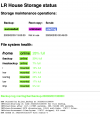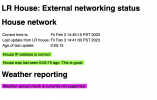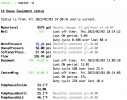A long time ago, I wrote a program in python that would simply display the system status on a terminal such as tty1. It used colors (Red / Yellow / Green) and information in blue so I could quickly identify problems.
I haven't had a need for this for several years mostly since I offloaded wifi to a physical router instead of directly on the computer through a USB wifi adapter card. I was thinking about adding it back and wondering if others have something similar or how they check that the system is healthy?
My system is fairly stable and I periodically check the logs to ensure that overnight jobs ran. This is for home use, but try to run my systems in a controlled, repeatable manner.
I haven't had a need for this for several years mostly since I offloaded wifi to a physical router instead of directly on the computer through a USB wifi adapter card. I was thinking about adding it back and wondering if others have something similar or how they check that the system is healthy?
My system is fairly stable and I periodically check the logs to ensure that overnight jobs ran. This is for home use, but try to run my systems in a controlled, repeatable manner.





